A Recent Find: A Pair of Carlton Ware Armand Lustre Ware Vases
by Kelly Keating on 11/26/10
Recently, I have been working with a wonderful designer in Madison, New Jersey who loves to use antiques in designing her clients' homes. She asked me to find a pair of vases for a client's living room mantle. The pair had to be substantial in size, complement the rooms color scheme of pale blue and rusty red and have a slight Asian feel. With this brief I found a gorgeous pair of ginger jars by the English manufacturer Carlton Ware dating to circa 1915-1920 in Tennessee of all places.
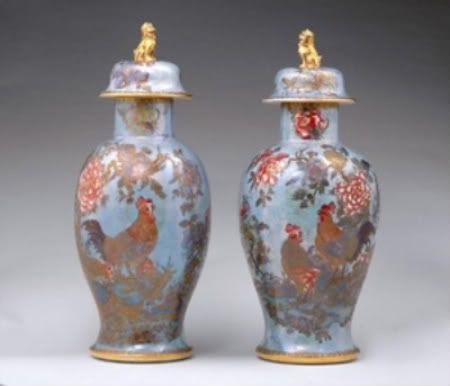
The vases feature a complementary, yet different design of hand-painted cockerels or roosters in underglaze enamels of rusty reds and navy amongst rusty red peonies set against a pale, mottled lustre blue ground. The entire motif is superbly highlighted with an overglaze metallic gold which was probably applied using a transferware process. This color scheme was a perfect match to the drapery treatments of the room. The vases on the mantle brought all the wonderful color of the drapes to the focal point of the room.
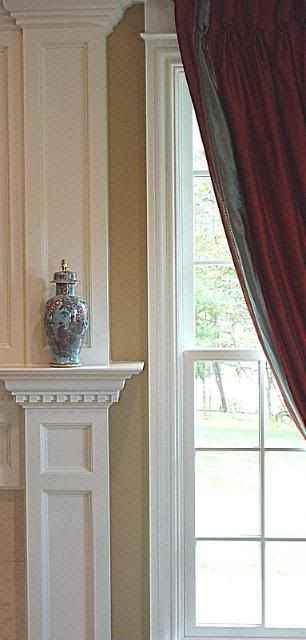
The cockerels and the peonies reminiscent of motifs in Japanese art impart the slightly Asian feel that the designer wanted to highlight in the room. This Asian feel is further enhanced by the finials of the ginger jars which are gilded foo dogs. In Asian culture, foo dogs serve as guardians against evil spirits at the entrances of homes and temples. They are a subtle and sophisticated addition to the vases. The cockerel motif, color scheme and foo dog finials firmly place this pair of Carlton Ware vases in the long tradition of European decorative arts that have been influenced by the arts of China and Japan.
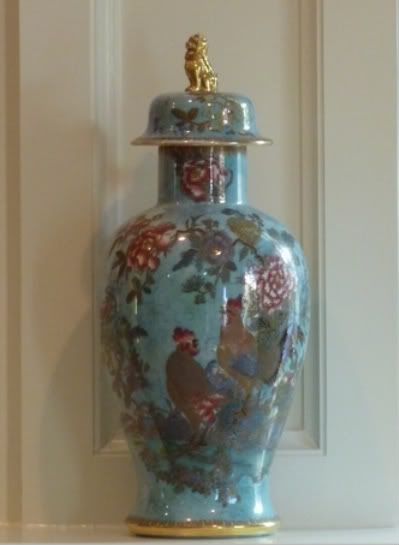
Carlton Ware was founded in 1890 and based in Stoke-on-Trent, England; The Carlton Ware trademark was introduced in 1894. The pair of cockerel vases I recently found were sold under Carlton Ware's separate high-end Armand line which began production circa 1915-1920. The vases are a true high fired lustreware with a pottery body more like china than heavy earthenware and were expensive at the time of their production. The backstamp shows 2 fish in water encircled by the name of the line.
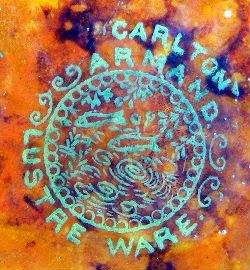
In the 1920's Carlton Ware introduced a new mode of production which combined decals applied to high glaze bodies with some hand-painting and gilt transfer. This process was in a sense a cheaper version of the expensive Armand line which did not use decals and was all hand-painted. This new process featured Asian inspired patterns such as New Mikado and Chinoiserie as well as a range of Tutankhamen inspired ware. The tomb of the pharaoh was discovered in 1922 by Howard Carter; the objects found in the tomb inspired many branches of the decorative arts. There was also a pattern called Persian that was inspired by the arts of the Near East. Here is a later New Mikado vase dated circa 1950:
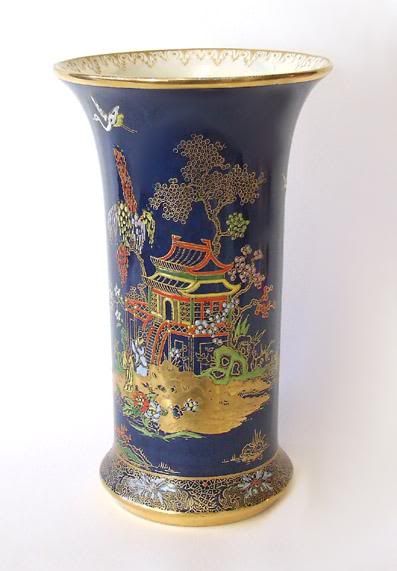
Contact me at [email protected] if you would like me to find you a gorgeous Carlton Ware item!
